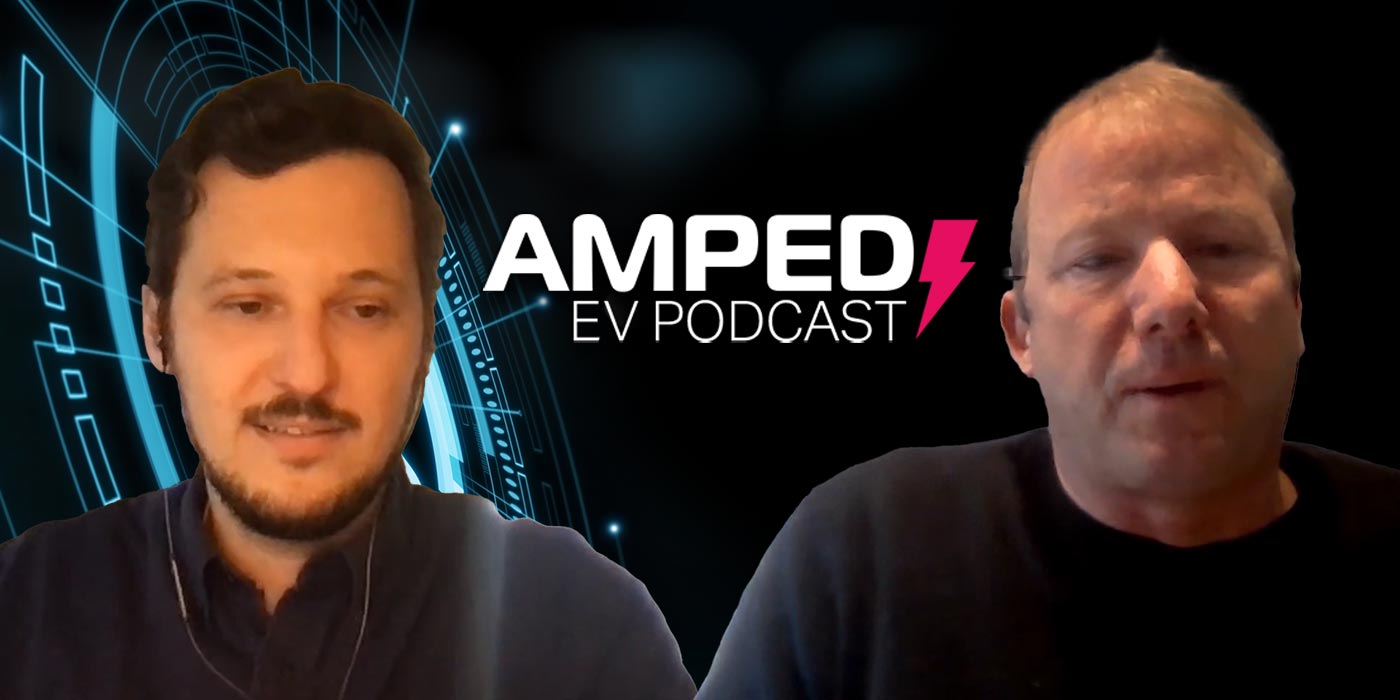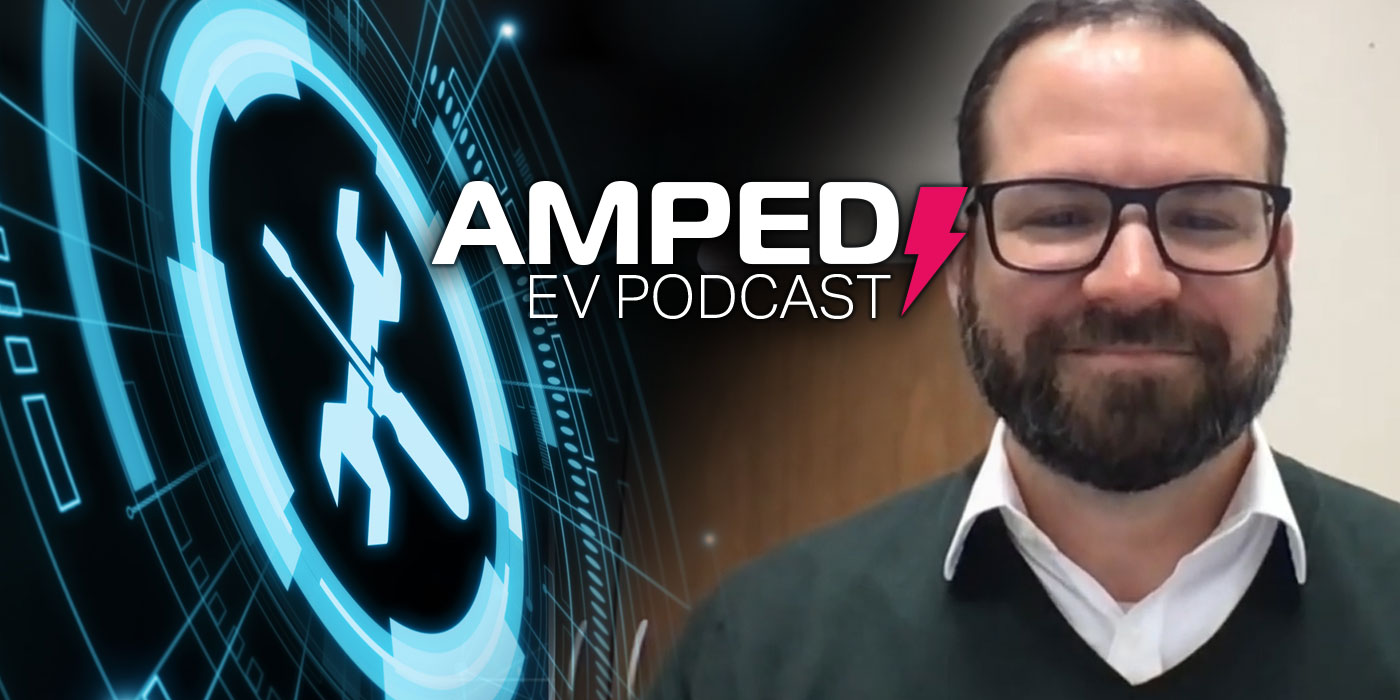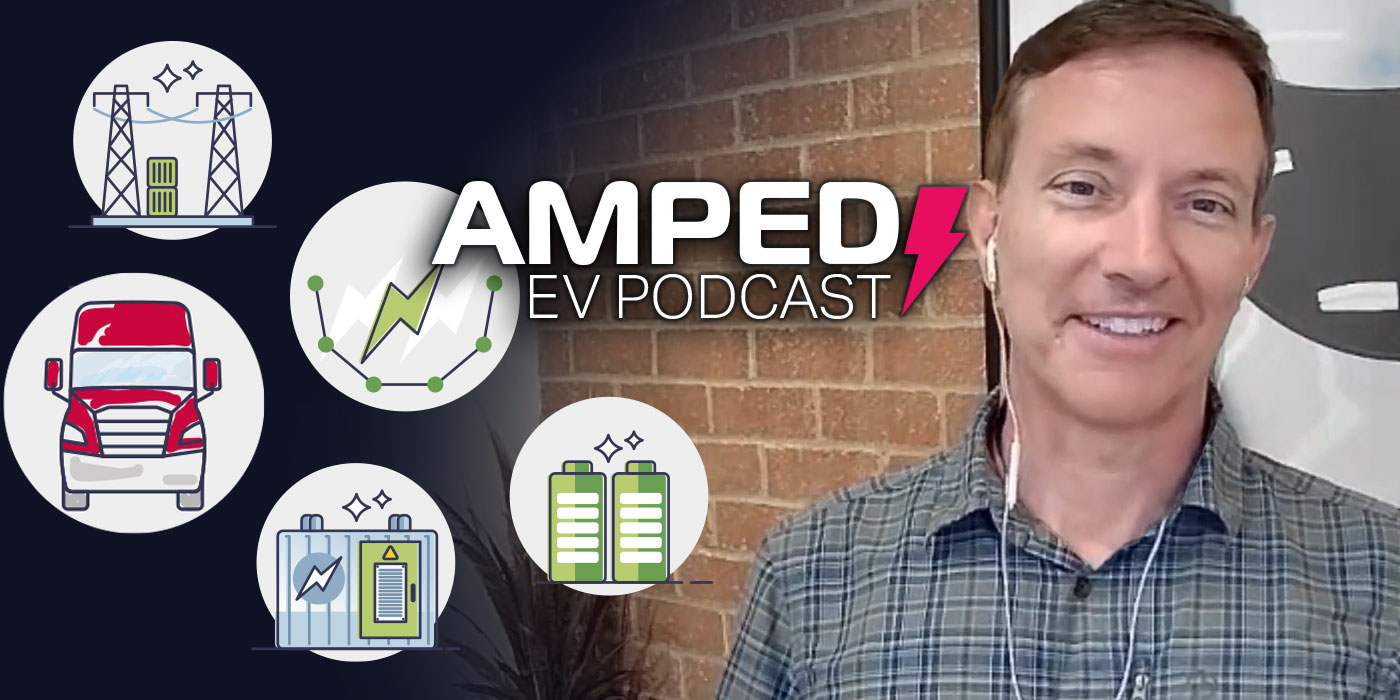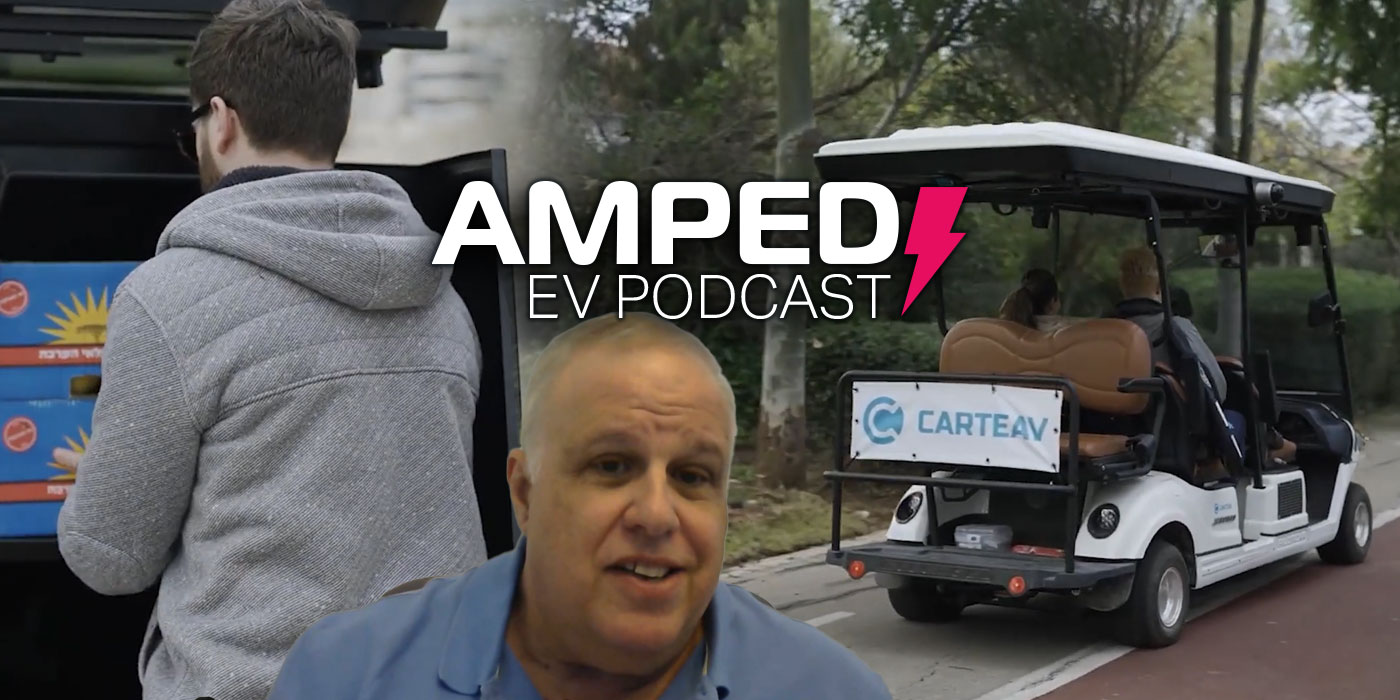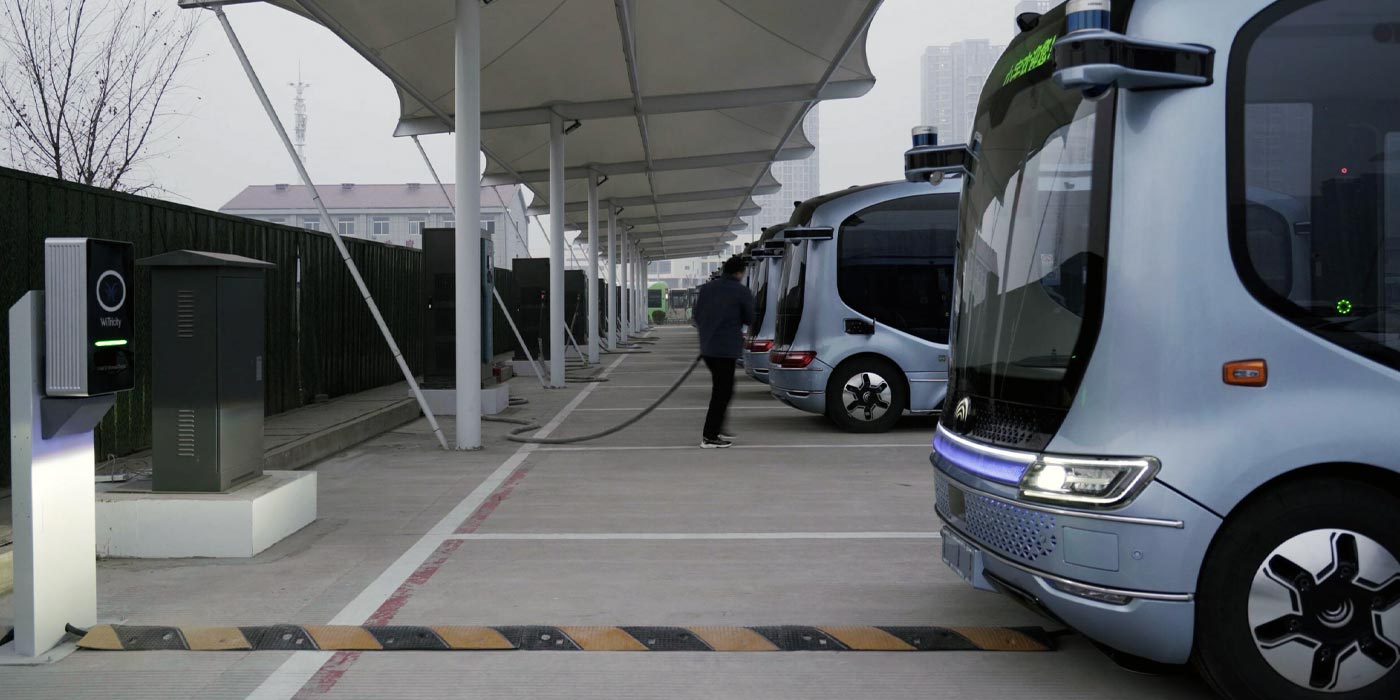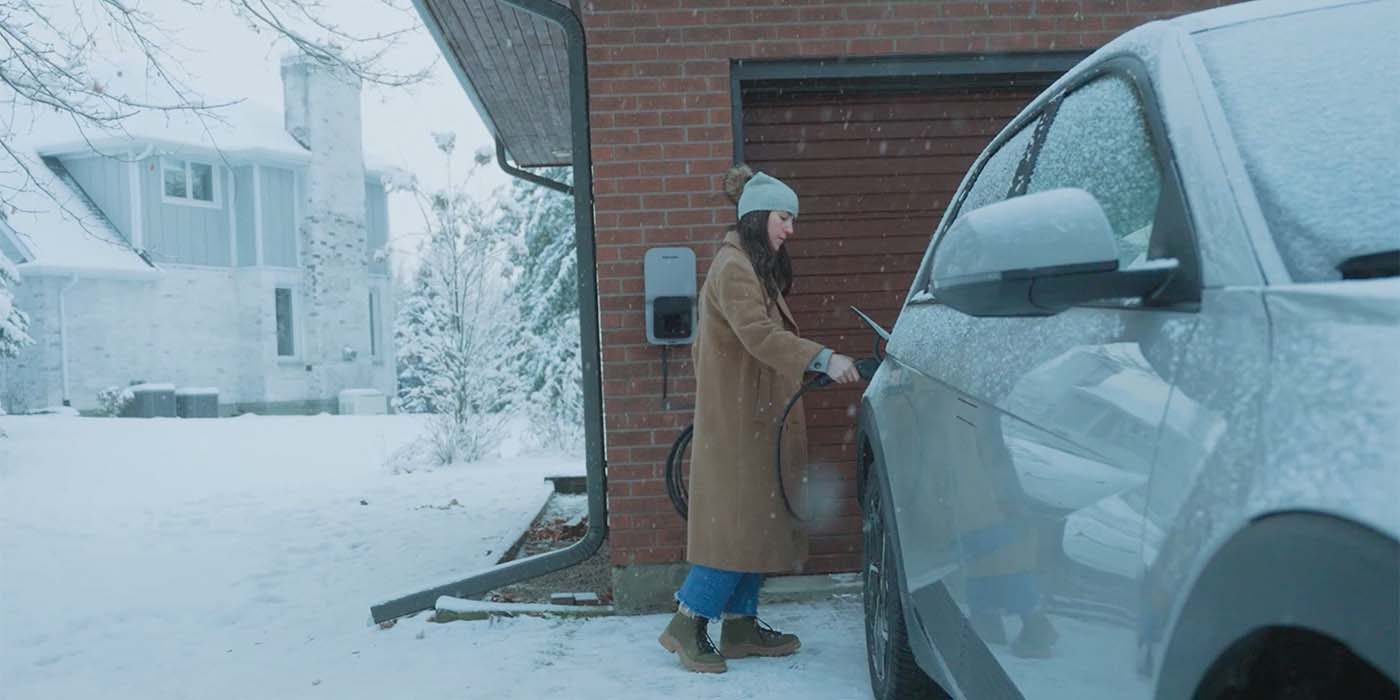Look, we just saw a charging station at a bank in Akron, Ohio. That must be a sign that these things have got to be darn near popping up everywhere at this point, right?
Not quite. Honestly, though, the numbers aren’t terrible. According to the U.S. Department of Energy, there are 46,286 locations in the U.S. where you can charge your EV at a public charging station. But is this enough? On this episode, we dig into the EV charging infrastructure details.
Want more Amped EV podcast? Click here.
Here’s a transcript of the show:
David Sickels: Hi, and welcome to Amped EV Podcast. I am David Sickels, the editor for The Buzz.
Jason Morgan: And I’m Jason Morgan, content director for Fleet Equipment. How are you, David?
Jason Morgan: We are talking. We had the hydrogen infrastructure conversation last time. We’re going to look at charging. I know we’ve touched on it a bit, right?
David Sickels: Yeah.
Jason Morgan: But there’s been lots of developments even in our own backyard.
David Sickels: Really?
Jason Morgan: I have something for you here. If you want, turn your attention to the monitor. Ashley, can you… We’ve got a picture here to show you. Look at that. Wow. Isn’t that…
Jason Morgan: So let me give you a little context for what you’re looking at and why I brought this up. That is in Akron, Ohio, just a stone’s throw from this studio. This is not California, as you can tell by that gray overcast sky there and the dead plants there in the planter. This is Akron, Ohio.
Jason Morgan: I went to the bank to do your usual things you do at the bank, and I was coming around and I stopped. I probably almost caused an accident because I slammed on the brakes. I was like, “Egads, look at this.” We have an electric car in an electric car space, actually charging, and it was like 20 degrees out. This is cold weather-
David Sickels: Wow. Yeah.
Jason Morgan: … electric vehicle operation. I had to stop like I was a maniac. Slammed on my brakes, pulled out my phone. I’ve got to take a picture of this not very big deal thing. But I feel like this indicates a turning part, at least for me. This is the first time I’ve seen locally. I mean, you see the spots at Walmart and no one’s ever parked there and no one’s ever doing…
David Sickels: Very rarely.
Jason Morgan: This is the first time that I saw, here at Akron, Ohio, it actually happening, and I thought, “This is happening.”
Jason Morgan: My favorite part is… I don’t know if we can zoom in maybe on the side. It says, “Four hour limit.” I’m just wondering who’s at the bank for four hours. Now, sometimes the line, you get in there, you’re going to spend four hours at the bank. And you’re like, “Oh my God, I had something to do today.” But I guess if you’re charging your electric car, you just hang out, pull out your phone.
David Sickels: Yeah, just hang out. Yeah.
Jason Morgan: Maybe you actually sit in one of those seats that’s at the bank for some reason.
David Sickels: Right, right, right. I mean-
Jason Morgan: Look at that.
David Sickels: This is pretty cool.
Jason Morgan: I know.
David Sickels: Like you said, I have seen them around, but it’s usually a Walmart or a Target parking lot. This is great to see.
Jason Morgan: No. And no one’s ever using it.
David Sickels: It’s rare.
Jason Morgan: And there we go. It is.
David Sickels: It’s rare.
Jason Morgan: Happening right here in Akron, Ohio, as we speak.
David Sickels: It is interesting. I do see them driving around. I mean, they’re getting more plentiful. More people are interested in electric vehicles now. I see them around. But do I see them charging? Not very often.
Jason Morgan: No. Well, they’re charging at home, right?
David Sickels: At home, of course. Yeah.
Jason Morgan: But you can do it when you go to the bank now for four hours.
David Sickels: That’s incredible.
Jason Morgan: Yeah.
David Sickels: Well.
Jason Morgan: I know. So anyway, I thought I’d show that.
David Sickels: On that note, that might be one of the electric vehicle charging station locations that the Department of Energy recognizes on their website.
Jason Morgan: Could be.
David Sickels: As far as I know, I don’t think they have account for physical chargers, because that would get a little ridiculous with all the charges and the homes and everything.
Jason Morgan: I see.
David Sickels: But as far as locations where you can go and you can park your car, just like this bank, and charge your car, they count 46,286 in the US. But that’s going to grow by quite a bit over the next eight years or so.
David Sickels: If you’re paying any attention to what the Biden Administration is doing, what they’re trying to accomplish with charging, they have an action plan to create 500,000 additional chargers by the year 2030. Obviously, this administration is putting a lot of effort into really kind of growing electrification in the US. As a result of this law, what they’re really to trying to do is take these chargers and not just kind of put them in the locations that you might expect, they’re really trying to focus more so on low-income areas or areas where charging is going to be a lot more difficult to come by normally.
David Sickels: So with that said, charging over the next 10 years or so is going to become… This bank that you showed me here, this is going to become much more commonplace, no matter where you are in the US, hopefully.
Jason Morgan: Right, right. No. Anything about the places that you’d want to see it in and… Movie theaters, maybe. I don’t know if anyone goes to a movie theater anymore, if those exist, people go.
David Sickels: I’ve heard.
Jason Morgan: My kid’s doctor office. Can you put one there? Because I am there for 10 days, I feel like. When you go in, you’re waiting. The dentist. Put one in at my dentist so I feel like I’m doing something productive for that kind of agony.
David Sickels: You know what’s interesting about the number 500,000 as far as charging stations goes?
Jason Morgan: No. What’s interesting about this number?
David Sickels: That is four times the amount of gas stations that the US currently has.
Jason Morgan: Okay. That makes sense though, because it’s almost like a decentralization of the charging, right?
David Sickels: Absolutely. Yeah.
Jason Morgan: You don’t have to go to a point, it’s just kind of wherever you are, which is really nice. Really interesting.
David Sickels: Yeah, for sure. For sure. I mean, this kind of stuff is huge. We’ve got Electrify America. Obviously, they develop charging stations and they are one of the bigger names in charging. They have their own plan to double the amount of charging stations that they have in the US and Canada, I believe, by 2025. So that includes having more than 1,800 fast charging stations and 10,000 individual chargers by the end of 2025. That’s going to bring them to, I believe if not every state in America, pretty darn close to it. Maybe 49 or so.
David Sickels: But I mean, that’s a big deal. Having this ability to charge on the go, perhaps at your kid’s doctor’s office or wherever it might be, that’s going to be a big deal. It’s going to make people want to invest in this technology.
Jason Morgan: Right. Well, and the idea of kind of supplemental charging, right? Because when I’m charging at home, I mean, I don’t need it at the kid’s doctor because I’ve already… It’s 10 minutes from my house, so I’m probably not burning range on that one too. But you don’t want to have it… We’ve talked about range anxiety. We’ve hit that before too. To that point, when you get that number of charges, you don’t want to have to worry about where am I plugging in next, right?
David Sickels: Absolutely.
Jason Morgan: You just want to be able to go. And it’ll be interesting. We had the interview about the infrastructure bill and its impact too, we touched on earlier in one of the earlier episodes. So it’ll be interesting to see how this shakes out.
David Sickels: Yeah. For sure. It’s funny because when we talk, we’re either talking about trucking or we’re talking about passenger vehicles. We haven’t really gotten into electric bikes, electric scooters, or electric four-wheelers. All these different electric vehicles that are coming out that people are interested in buying. And if you have an electric four-wheeler, it’s going to be more difficult to find an electric charging station on the road because you’re off-road, typically.
Jason Morgan: Right. Right. For sure.
David Sickels: There is a company called Taiga that is launching its own off-road charging network. This is really interesting because I mean, just about any… I mean, we’re talking off-road trails, we’re talking waterways. It’s going to come to the point where if you need to charge, you’re going to find a place to charge.
Jason Morgan: Right. Right, right. On the commercial side, I have to say though… I mean, all this is very cool. Seeing the picture locally is very cool. Commercial fleets though, it’s still very localized to their location in terms of infrastructure, right?
David Sickels: Sure, yeah.
Jason Morgan: The fleets aren’t really depending on the Walmarts of the world to put in a charging place.
David Sickels: You’re not going to see a heavy duty truck at the bank.
Jason Morgan: No. Yeah, it’s probably not going to fill. You will probably see it at Walmart, but I don’t know if it’ll fit in the space at the bank. You never know. I mean, if you’re desperate-
David Sickels: If you’re desperate, right, right.
Jason Morgan: … you can pull right up there, I guess. But still, I mean, even in the past couple months, big, big, big investment on the commercial side. I’m going to start with the manufacturing giant, Ford. Ford is going big into electric, and this is-
David Sickels: Ford just-
Jason Morgan: … just talk. I mean, the headlines keep coming. They have ramped up production of the F-150 Lightning, which I think is going to be really big. I mean, the electric version of the, what, truck, vehicle? I forget what their tagline is. But everybody has one. You just get one. If you’re an American, you just get an F-150 at some point in your life, I guess.
David Sickels: Absolutely. Yeah.
Jason Morgan: It just happens.
David Sickels: Yeah, yeah. It’s a rite of passage.
Jason Morgan: And even me, I would’ve been like, “I don’t know.” But now the Lightning version? I’m like, “All right, maybe. Maybe I want that. Maybe I need that.”
David Sickels: It’s funny you should say that. I just had a phone call with a friend not that long, maybe a month or so ago. He’s never been a truck guy. Doesn’t need a truck in any way, but he’s saying, “Man, these new F-150s, I’ve got to tell you, I might get one.” I mean, it’s got the generator. It could make electricity in your house if you need it. I mean, it’s pretty cool.
Jason Morgan: I mean, it’s the technology crossover, which is kind of cool, right?
David Sickels: Yeah, for sure.
Jason Morgan: It’s funny. But Ford Pro, so this is their segment that really, really, really focuses on the commercial segment, right? So they’ll have the Lightning, which will find its way in the commercial applications to some degree too, right?
David Sickels: Mm-hmm (affirmative).
Jason Morgan: Lots of fleets that run all sorts of size trucks. Also run pickup trucks just because. Especially if you’re in the different niche applications, construction, municipalities, that kind of stuff, you’re running pickup trucks. But Ford Pro supports commercial. I would be remiss if I didn’t mention the electric transit too. I mean, who doesn’t see Amazon vans-
David Sickels: Oh my gosh, yeah.
Jason Morgan: … and the like pulling up in front of your house daily, right?
David Sickels: Right.
Jason Morgan: So the E-Transit, which is the Transit, one of the biggest selling vans in the market, going electric. Lots of commercial applications there too. Lots of upfit opportunities there too.
Jason Morgan: Ford Pro’s charging solutions, basically Ford’s consulting to get electrification and charging infrastructure where you need it, right? So Ford is getting into the charging infrastructure game. They are anticipating the charging industry need to grow to 900,000 full-sized trucks and vans in the US by 2030.
David Sickels: Wow.
Jason Morgan: That is what they’re anticipating. Well, clearly, and that’s what they want to sell, right?
David Sickels: Yeah.
Jason Morgan: Like, “Hey, let’s sell that number of vehicles.”
David Sickels: Of course. Of course.
Jason Morgan: But not just them. But they want to be a partner, so they’re partnering with companies to be able to do that. And partnering, really, in the commercial space is the name of the game.
Jason Morgan: I’ve got kind of a lightning round of headlines to throw at you real quick. Are you ready?
David Sickels: Throw them at me.
Jason Morgan: You ready for this? Okay. PACCAR, which manufacturers Kenworth and Peterbilt trucks, and they have their electric trucks, also have their charging solution. It’s been on the market for a while since they’ve launched their trucks here… Gosh, I always have to think about the year now that… I mean, the 2020s. I’ve forgotten, but it was in the fall of 2020. They’ve been bringing their electric trucks to market. They had their PACCAR charging solution. But they are partnered with Schneider Electric and EnTech to provide those.
Jason Morgan: Of course, we have on the Daimler Trucks North America side, we’ve got Detroit eFill stations, right? So they have their own lineup of commercial vehicle chargers.
Jason Morgan: I think the real takeaway is OEMs are getting into the charging game, right? They might be white labeling someone else’s solution, partnering. It’s all just kind of different how they’re tailoring that.
Jason Morgan: One of the biggest announcements just before the holidays too. I mean, if you’re going to drop this kind of a thing and then everybody just goes on vacation. So it made a big splash and it gave you something to think about. Daimler Trucks, Volvo, TRATON, three-
David Sickels: Very big names.
Jason Morgan: … big names, big competitors, they have signed a binding agreement to create a joint venture to install and operate a high performance public charging network for battery electric heavy duty long haul trucks and buses across Europe.
David Sickels: Europe.
Jason Morgan: Europe. Europe.
David Sickels: Okay. That makes sense though. It makes sense.
Jason Morgan: Yeah. I mean, because y’all got to come together to build this kind of infrastructure. Europe, again, is still way ahead of us in terms of progressiveness of rolling this stuff out.
David Sickels: And the heavy duty routes tend to be much smaller.
Jason Morgan: Much smaller than the US, right.
David Sickels: So it totally makes sense.
Jason Morgan: And I must throw out the caveat that kind of the scuttle that I’ve heard with my context right out the industry is that they’ve been very clear that this is a Europe only thing.
David Sickels: I see.
Jason Morgan: But, and this is pure Jason Morgan speculation, right? So you can put a little whatever, disclaimer there. Really long list of lawyer stuff that they make us put when Jason Morgan starts talking about stuff he doesn’t understand. Investment being what it is, scale being what it is, even if we don’t see that in brand come to market, they’re going to learn a lot of lessons. They’re going to develop a lot of solutions, right?
Jason Morgan: What that means in terms of how then the individual brands roll it out to the North American market, just saying, you don’t throw money at something and just go, “Well, we’ll just use it here.”
David Sickels: Yeah, yeah. No, that’s really interesting news.
Jason Morgan: I don’t know. I don’t know.
David Sickels: That’s big.
Jason Morgan: Yeah. I don’t know. We’ll see.
David Sickels: Reminds me of the cellcentric news a little bit with-
Jason Morgan: I know.
David Sickels: … Daimler and Volvo coming together to create that fuel cell entity.
Jason Morgan: Well, and what I think it speaks to is really the need for this evolution of transportation, right? I mean, we’ve talked a lot with Peter Voorhoeve on the North American side of Volvo Trucks, right?
David Sickels: Yeah.
Jason Morgan: He’s the North American president, CEO on the Volvo side. I mean, he is passionate about this. He believes in it. He wants to do it. I think Volvo as a whole, globally, is passionate about it. I think all three of these companies are passionate about it. And while they’ve said many times they’re still major competitors, they still deliver their own unique solutions. It does kind of indicate that these global shifts that need to happen can’t just be done by one company or one person, right? Everybody’s got to pull their own weight. We’ve seen-
David Sickels: 100%.
Jason Morgan: … fleet managers investing in it. We’ve seen passenger side investing on it. So it’s interesting just to see the developments and be along for this ride.
Jason Morgan: One more fun one too. You mentioned the infrastructure bill. So Eaton, which I think is synonymous a lot with transmissions in the heavy duty commercial space, they do a lot of electrical infrastructure architecture work on the vehicles as well, right?
David Sickels: Mm-hmm (affirmative).
Jason Morgan: But they announced a $4.9 million award from the US Department of Energy to reduce the cost and complexity of deploying direct currents, so DC fast charging, electric vehicle infrastructure. So even they’re getting into the charging game. So OEM suppliers all jumping into this. It’s just really, really an interesting time right now to see all the investment going in. I think on the commercial side, if we’ve seen fleets getting into it and figuring out who their partners are to put the infrastructure in, now it’s starting to get a little wider in scope, right?
David Sickels: Yeah, for sure, for sure. Charging is so interesting because there are so many different technologies being invested and deployed and tested that we don’t know what the future is going to look like, especially when it comes to heavy duty, I feel like.
David Sickels: I don’t know if you saw the announcement, Wave and Kenworth. So Wave, they have these wireless mats that you can put down, and Kenworth, obviously a truck manufacturer-
Jason Morgan: Yeah, truck.
David Sickels: … they can put their electric trucks over these mats. They’re testing these together to try to wirelessly do this. Now it’s a very small test that they’re trying to do with this. They’re just kind of seeing how it works out. But the fact that they’re trying this, I mean, can you imagine what that could mean for trucking in general? I mean, that would be huge if this takes off.
David Sickels: So just seeing all of these different ways that people are thinking about charging. I even saw one company that… This was a European only thing, but the way that they install charges, this is for passenger cars now, but they literally have the chargers… So you think of these big obelisks when you think of a charging station. They build them under the ground and then they have just a little kind of… It almost looks like a keg tap in some way or something that kind of emerges from the ground with a little charging cord and you charge your car in there. So I mean, there’s so many different things that you can do here, do in this space, and it’s just evolving by the day and it’s really exciting.
Jason Morgan: Right. Well, I mean, we talked to Rich Mohr not long ago, and one of the things ChargePoint can do, for example, too, is they can hang it. They can hang their charger and then bring your cables down, right? So if you’re in a truck service operation or buses, right?
David Sickels: Buses. Yeah.
Jason Morgan: They put them right up their buses and then they can… It’s just out of the way. You’re not running into it. You kind of reduce the risk of someone kind of driving over it by accident, right?
David Sickels: Right, right.
Jason Morgan: Or banging into it if you’re backing up vehicles or anything like that. So yeah, lots of really cool things. And going back to the earlier picture where we saw it locally, I don’t know, we need to put a… We can cut to the it’s happening GIF right now. So if we can get a good GIF, something like, “It’s happening.” It’s happening. I think-
David Sickels: It’s happening.
Jason Morgan: … that’s a fun takeaway. It’s happening.
David Sickels: Yeah, it is. It is. Well, Jason, this was fun.
Jason Morgan: Always.
David Sickels: Thank you for joining me once again on The Amped EV Podcast.
Jason Morgan: Yeah. Amped to be here.
David Sickels: I too am amped. It was great hanging out with you. Thanks for joining us. We’ll see you next time.






